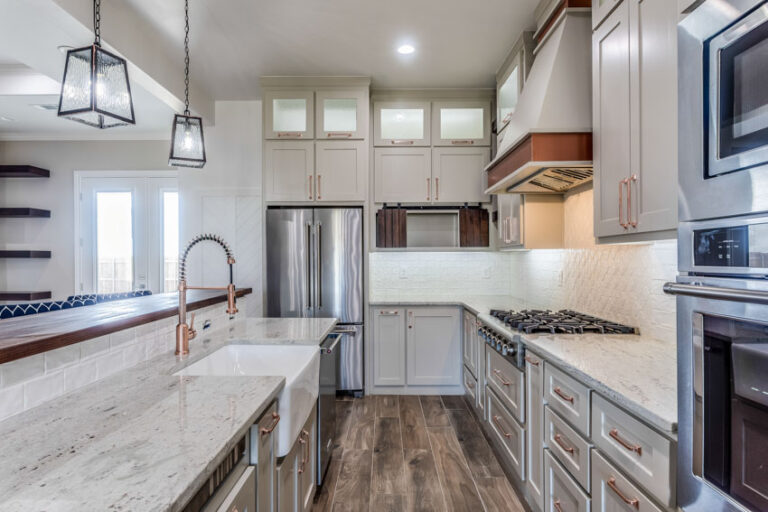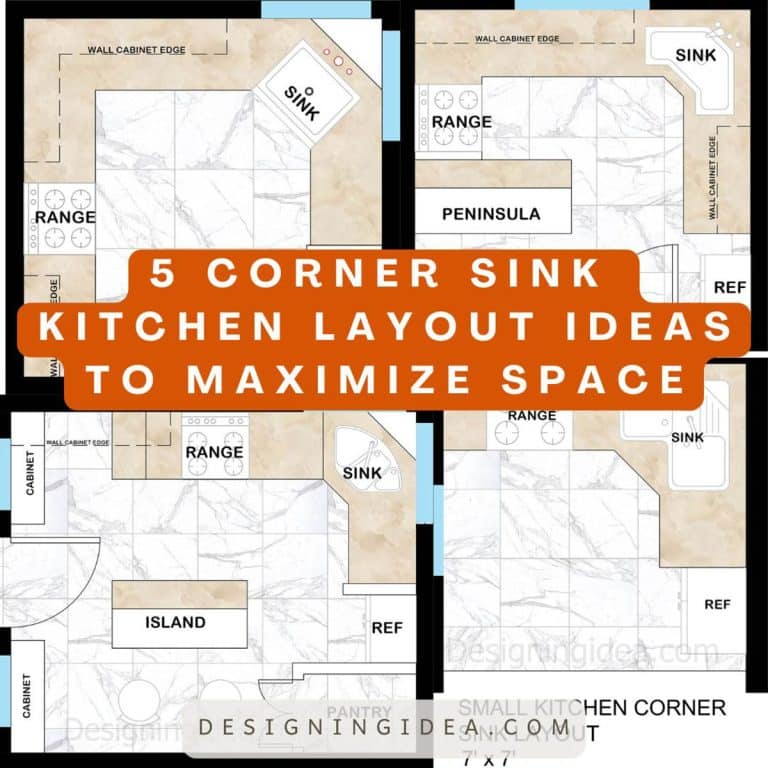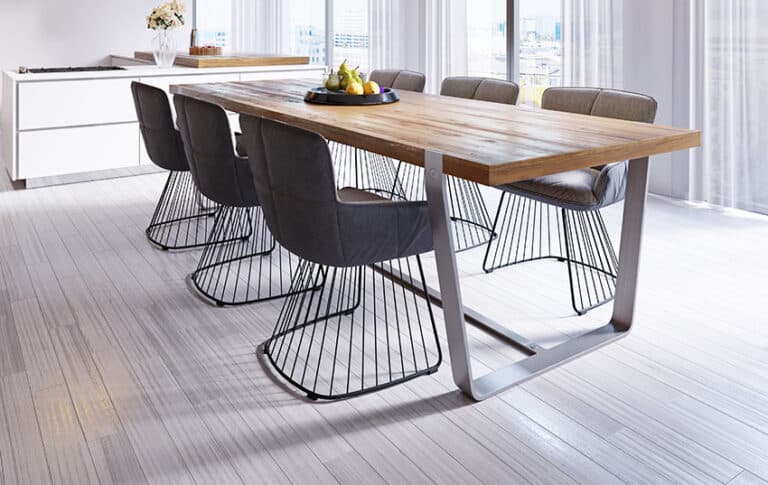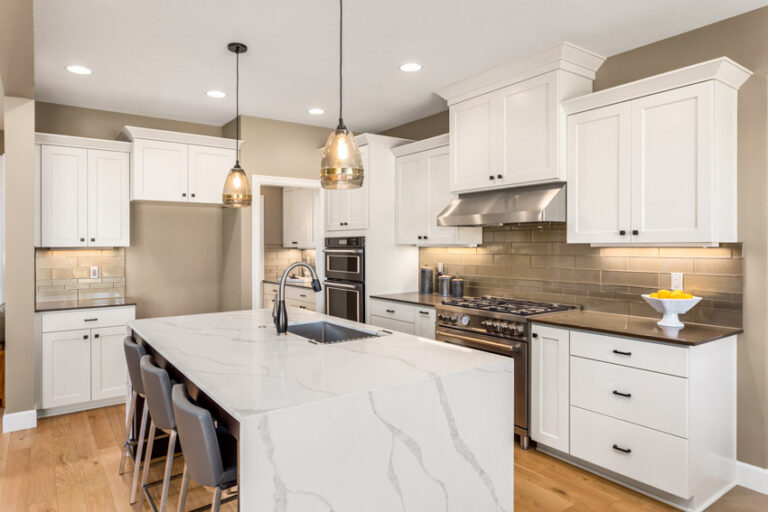Why You Should Avoid Open Shelf Storage: Hidden Kitchen Drawbacks
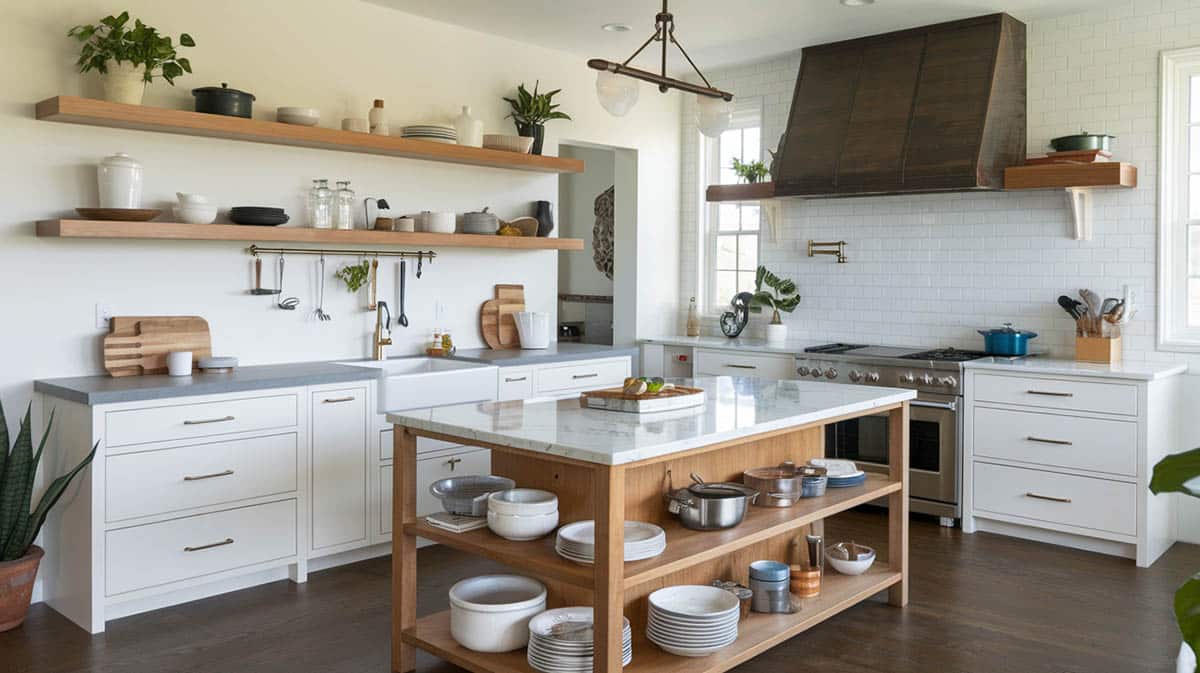
Open shelving is everywhere these days. Scroll through Instagram or flip through a home magazine and you’ll see minimalist kitchens with dishes displayed on floating shelves, carefully styled book collections, and matching storage containers. The concept seems appealing – remove cabinet doors, install open shelving, and voila! Your everyday items become decor that sparks joy and conversation. But have you considered why you should avoid open shelf storage in your kitchen?
The appeal is obvious. Open shelving emerged from industrial-chic design and exploded thanks to HGTV, Pinterest, and celebrity home organizers revealing pristine, wall-to-wall versions. The aesthetic promises functionality and style – a Pinterest-worthy life of organization and visual harmony. But let’s get real. Behind the filtered photos lies a harsh reality. Yes, open shelving may photograph beautifully, but living with it day-to-day? Not so much. From the dust and grime to the pressure of maintaining a perfect showcase, open shelving brings some serious downsides that aren’t obvious at first glance.
Visual Clutter: The Psychological Burden
The glossy open shelving we see in magazines promotes a dream that rarely matches reality. What those perfect photos don’t show is the psychological toll of constant visual exposure to your stuff. Research shows that visible clutter, even when organized, increases stress and reduces focus by demanding mental energy to process. Psychologists call this “visual noise”.
Maintaining that Instagram-worthy aesthetic is exhausting. Unlike closed storage where items can be tucked away, open shelves require ongoing curation as even slight disarray is noticeable. This creates “display anxiety” that homeowners don’t expect. New items must suit both your practical needs and the current visual aesthetic of your display. Even simple purchases turn into design decisions.
Ironically, open shelves often make rooms feel smaller, not larger. The visual weight of displayed items crowds the space instead of opening it up, leaving the eye no place to rest. This effect is magnified in smaller rooms where visual simplicity is key to feeling spacious. The website Colormelon goes as far to state that “open shelving is out in 2024.”
Dust: The Never-Ending Battle
You drastically underestimate the relentless persistence of dust when initially charmed with open shelving. Within mere hours of cleaning, a thin veil of grit has commandeered every exposed inch. In kitchens, cooking residue bolsters dust’s powers, forming a hard-to-clean sticky foe. Frequent deep-cleanings are required to maintain your realm’s luster and utility.
Dust’s creeping damage spares no item, progressively degrading books, electronics and dishware alike. Pages yellow, components falter, and grimy cups render cleanings futile. This home invader even threatens resident health, triggering allergic reactions and aggravating respiratory conditions. Asthma, allergy, and immunology experts confirm that reducing exposure is critical for symptom management.
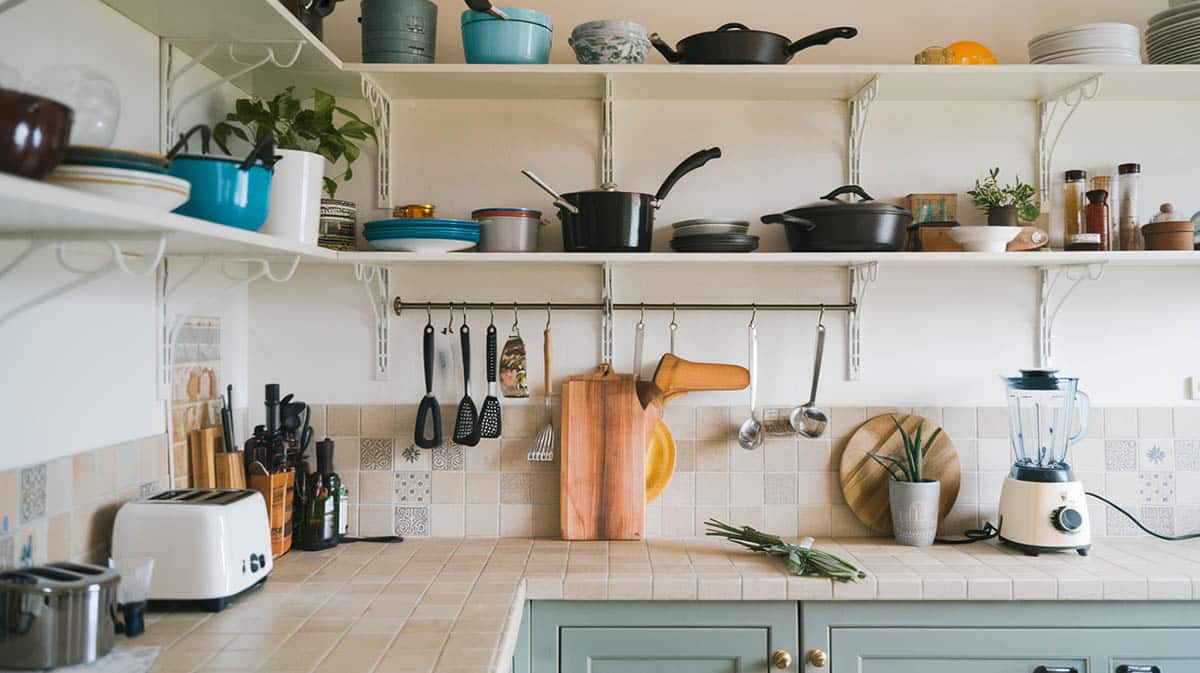
Limited Privacy: When Everything’s On Display
The “see it all” aesthetic of open shelving comes with practical and social tradeoffs. While the minimalist look is popular, living with extensive exposed storage poses real challenges.
Firstly, there’s no place to tuck away life’s little messes once everything is on constant display. The mismatched dishes and beloved but worn items many households own now become glaring imperfections that must be constantly managed. Stashing personal items like medication out of sight becomes impossible without closed storage solutions somewhere.
Secondly, the pressure to maintain a Pinterest-worthy appearance can spur anxiety when entertaining guests. With all storage acting as display, your organizational systems become part of your home’s decor, open to scrutiny. This tension between utility and aesthetics strains in spaces like kitchens.
Today’s on-trend look may turn off tomorrow’s buyers who desire flexibility and discreet storage solutions. Real estate agent Al Froehlich actually reports extensive open shelving decreasing some homes’ appeal, as buyers foresee the constant need to keep everything presentable.
Organizational Challenges: The Flexibility Dilemma
Open shelving units seem like an excellent way to neatly display items while maximizing storage space. However, their static design hides some frustrating limitations. Unlike closed cabinetry with adjustable components, open shelves provide a single fixed plane of storage. This makes adapting to changing organizational needs over time an uphill battle.
As your belongings evolve, maintaining an orderly appearance on open shelves requires constant rearranging and reorganizing. Adding new items often forces you to completely overhaul existing displays to make space. And you quickly discover the storage capacity is far more limited than it appears.
While closed cabinets can be packed to the brim, open shelves must have breathing room between objects to avoid looking cluttered. This wasted space becomes especially apparent when trying to stash oddly shaped items of various sizes, and most households will need to often store items of different sizes and shapes.
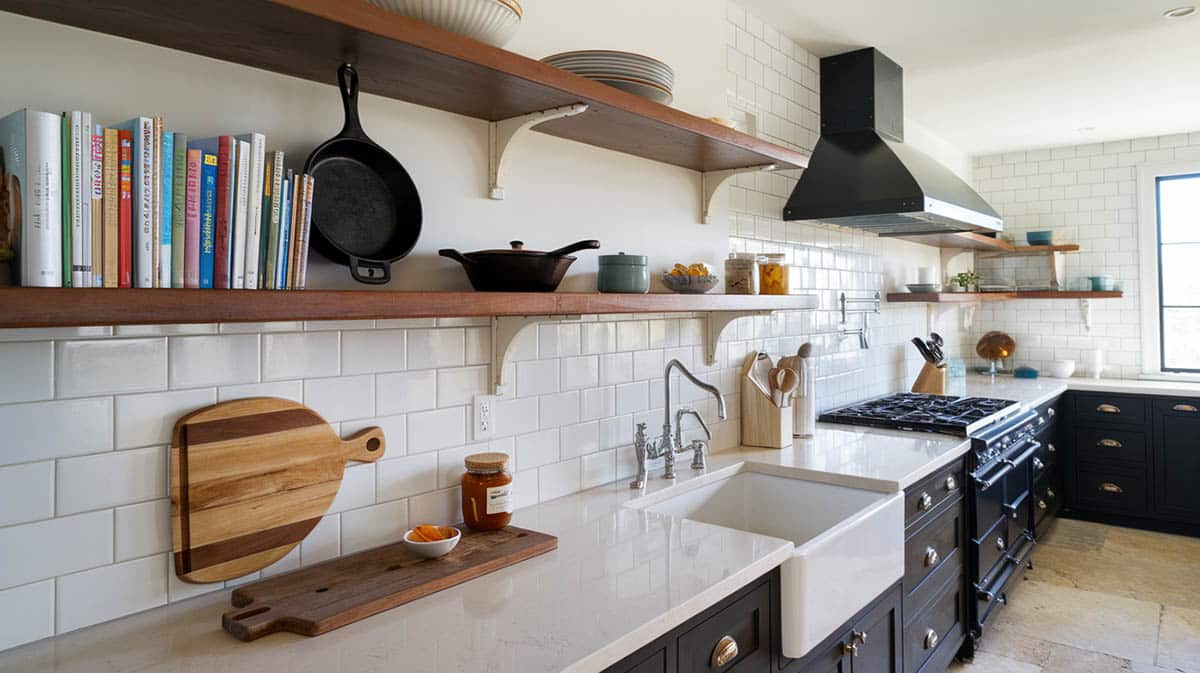
Item Deterioration: The Hidden Cost
One often overlooked problem is that items left out on open shelves allow environmental factors to add to their deterioration. It’s a real issue that can happen over time without you even realizing it. Take books for example. Sunlight bleaches out the spines and UV radiation breaks down the structural integrity of the pages. Fabrics fade. Metals tarnish. Plastics become brittle. It’s not just the sunlight, but the fluctuations in temperature, humidity, and air quality too that can warp natural materials like wood, make paper brittle and yellow, even foster mold growth.
Valuable books and documents are especially vulnerable when left out in the open without climate control. And it’s not just books. Textiles and fabrics succumb to dust accumulation, which embeds itself in the fibers, causing permanent damage. Sunlight also degrades dyes and weakens the fabric over time.
The point is, while open shelves may seem convenient for storage, they allow for accelerated deterioration of items through exposure to environmental factors. Light, heat, moisture and air quality create havoc through fading, warping, mold growth and more. Closed storage solutions with climate control are better suited for preserving valuables against deterioration over time.
Practical Alternatives: Finding Balance
Finding the perfect balance between form and function can be tricky when choosing home storage solutions. The practicality of closed cabinets often seems at odds with the visual appeal of open shelving. However, with some creative compromising, you can enjoy the best of both worlds.
Modern closed cabinets now offer chic, handleless designs and innovative finishes that contribute beauty without sacrificing functionality. Strategically blending these with limited open shelving allows you to display your favorite items while keeping the rest neatly tucked away, safe from dust and damage. Glass-front cabinets provide a glimpse of what’s inside without exposure and pull-out organizers and custom fittings keep interiors orderly.
Continued innovations in storage make it easier than ever to tailor solutions to your unique needs and style. Modular systems with mix-and-match components allow you to prioritize form or function in different areas as desired. With some thoughtful curation, you can seamlessly incorporate closed and open storage in a cohesive way that balances aesthetics and practicality.
Tips for Making the Right Choice
When it comes to open shelving the pressure to maintain a magazine-worthy display can induce stress. And quality storage containers, lighting systems, and additional cleaning supplies pile on financial costs.
Consider your cleaning schedule: While the occasional open shelf can add a stylish touch, implementing it as your primary storage solution is tricky. Consider your lifestyle and cleaning habits carefully – are you realistically going to dust and tidy open shelves on a regular basis? Do you host formal dinner parties, or does your family eat casual leftover meals? Open shelving works best for those who deeply prize appearance over functionality and who don’t mind devoting time to maintenance.
Start out small: For those still tempted by the look, aim to start small. Add a single open shelf in your kitchen or cabinet to test it out.
Use mixed storage options: Combine closed and open storage to balance aesthetics and practicality. Invest in bins, baskets and storage containers to corral items out of sight.
Be realistic: Approach with realistic expectations around cleaning and maintenance. And consider whether open storage will mesh with your lifestyle or cause more headaches than it’s worth. At the end of the day, the most beautiful storage solutions are the ones that simplify life rather than complicate it.
What do you think about open-shelving in the kitchen? Love or hate it, let us know in the comments below.

